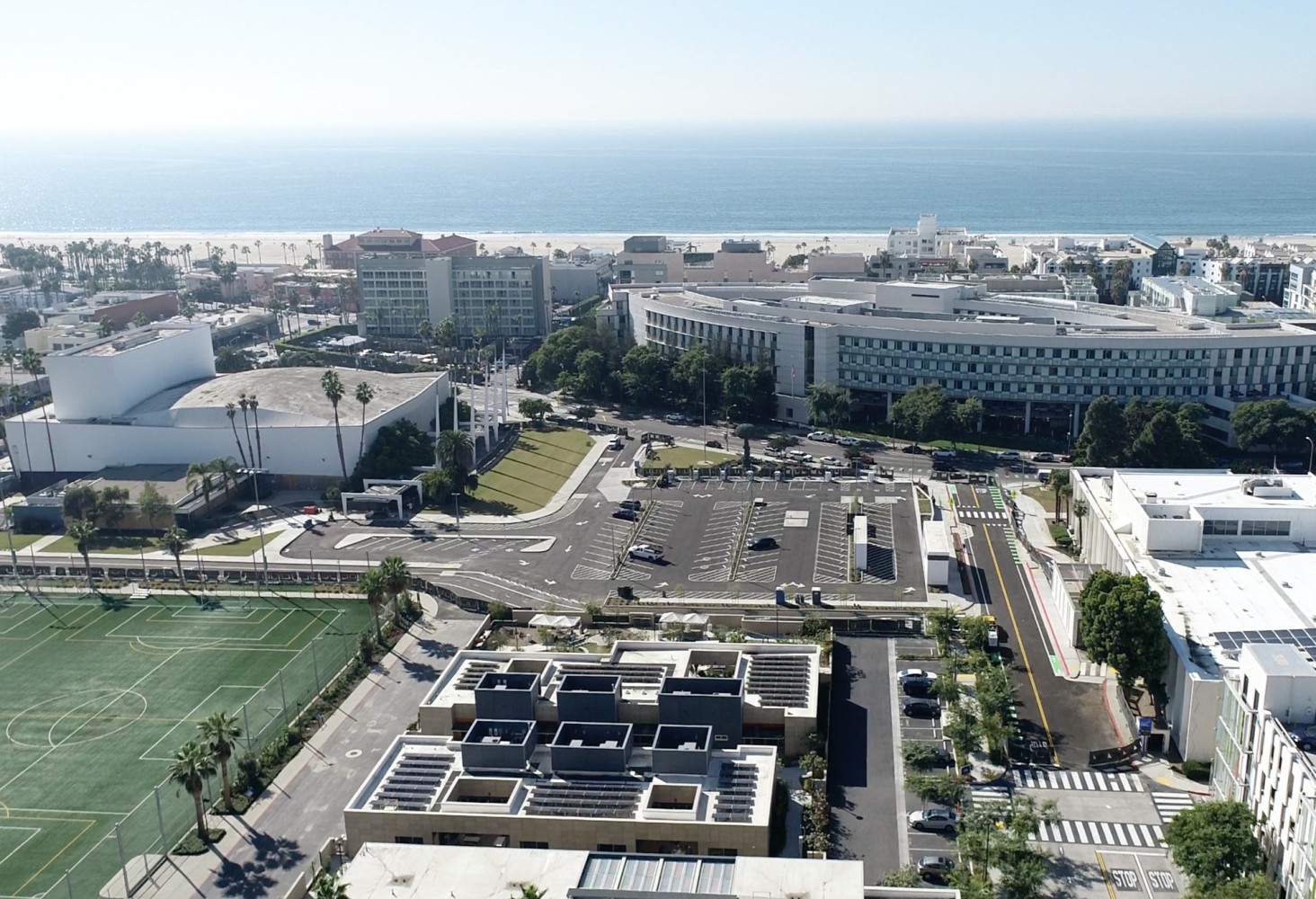City’s Sustainable Water Infrastructure Project reducing reliance on imported water and sets a model for future projects
Santa Monica has been using a pioneering water recycling facility since November to capture rain and store it underground for future use. As Southern California has been experiencing seemingly constant rainfall, the city has been capturing stormwater, urban runoff, and municipal wastewater and purifying it for potable reuse. This first-of-its-kind facility is located beneath a parking lot and features a 1.5-million-gallon stormwater harvesting tank and a one-million-gallon-per-day advanced water treatment facility. The recycled water can be used for irrigation, toilet flushing in buildings that have dual plumbing, and to recharge groundwater aquifers.
The project, called the Sustainable Water Infrastructure Project (SWIP), was funded with $75 million from the California Clean Water State Revolving Fund, $8.77 million in bonds from a voter-approved Proposition 1 stormwater grant, and $7.5 million from Measure W, which Los Angeles County voters approved in 2018. The measure taxes property owners 2.5 cents per square foot of impermeable surface area and uses the funds to increase water supplies from local sources.
Before this winter, rain that fell on Santa Monica was diverted to the Santa Monica Bay through a storm drain. However, a separate project completed five years ago captures stormwater in a 1.6-million-gallon tank under the Santa Monica Pier parking lot and recycles it through the SWIP. The system is the first in California to treat stormwater and inject it directly into the groundwater basin to recharge local supplies.
As California faces a drought and public outcry about the wastage of stormwater, the SWIP received the National Water Reuse Association’s transformational innovation award and was visited by California Environmental Protection Agency Secretary Yana Garcia as a model for future projects.
Santa Monica’s sustainable water project has been in development for more than a decade, following a 2011 City Council directive to look into the feasibility of providing all of the city’s water supplies locally. Santa Monica currently derives almost 60-70 percent of its water from local groundwater naturally recharged from rain that falls into the Santa Monica mountains. It supplements the rest with imported water from Northern California and the Colorado River.
To achieve 85 to 90 percent water self-sufficiency before the end of this year, the City has been constructing various projects, including upgrading its Arcadia water treatment plant with a new technology called flow reversal reverse osmosis. This will enable the city to recover an additional 10 percent of purified water, making it the first municipality in the country to use this technology.
The SWIP system, in addition to capturing stormwater, also treats raw wastewater to exceed drinking water standards and is capable of providing as much as 1,600 acre-feet of purified water per year, or about 10 percent of the total water supply.













